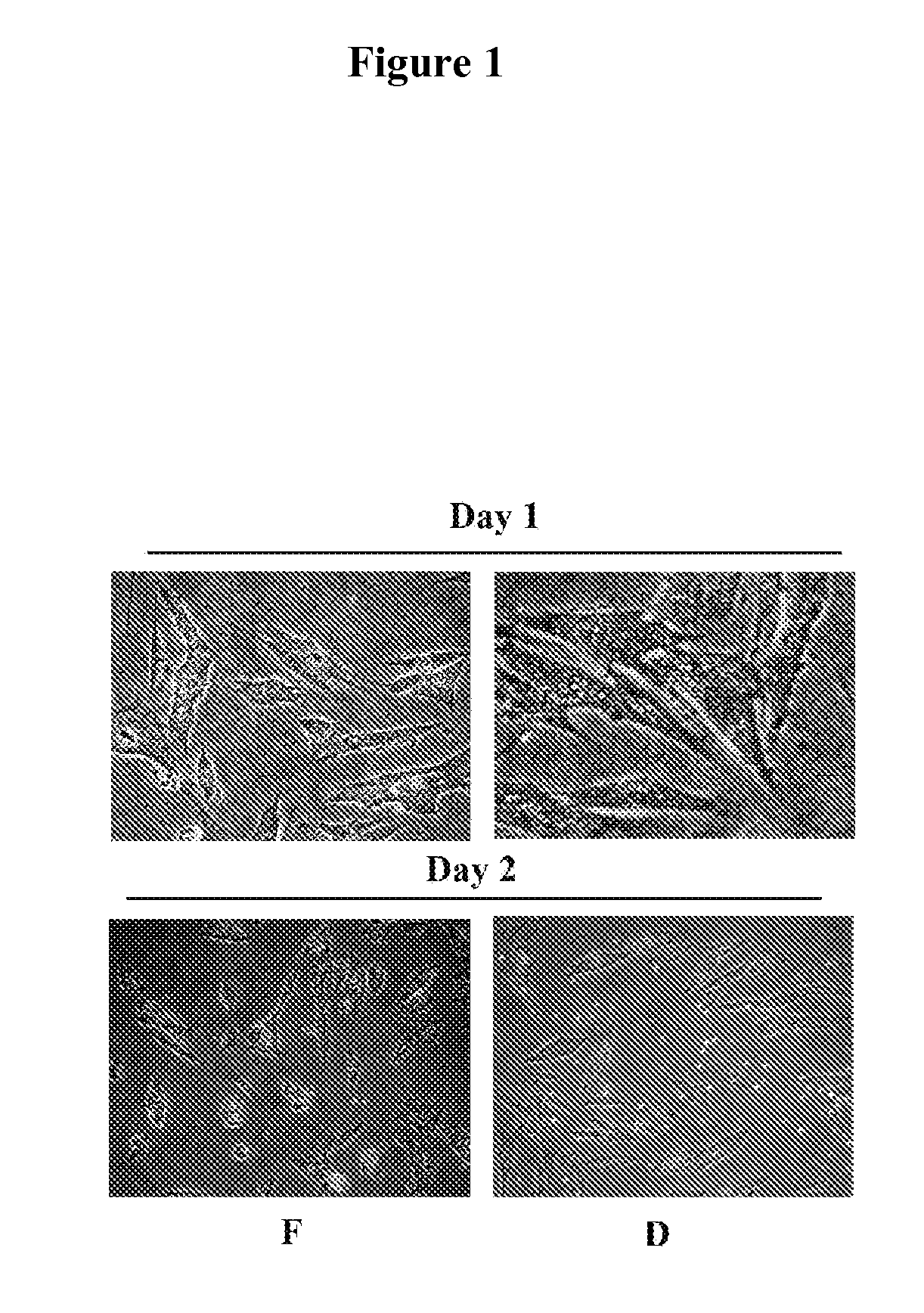Method and composition for restoration of age-related tissue loss in the face or selected areas of the body
a tissue loss and age-related technology, applied in the field of age-related tissue loss restoration methods in the face or selected areas of the body, can solve the problems of reducing collagen, loosening and losing strength, and less able to resist stretching, and achieve the effect of restoring age-related tissue loss
- Summary
- Abstract
- Description
- Claims
- Application Information
AI Technical Summary
Benefits of technology
Problems solved by technology
Method used
Image
Examples
example 1
Protocol for Skin Rejuvenation with Autologous Adult Stem Cells
[0108]The skin is cleansed with 70% alcohol. An Emed, Inc. SilkPeel™ treatment is then administered to remove the superficial epidermal barrier and gross bacteria. The skin is then vacuumed using a standard dermatological vacuum set on high. The skin is then exposed to a Omnilux blu lamp (wavelength 415 nm) for 15 minutes to kill residual bacteria. This is followed by exposure to a Omnilux red lamp (wavelength 633 nm) to open the pores of the skin and to dilate the subdermal plexus to improve stem cell survival.
[0109]A second cleansing of the skin with 70% alcohol is performed. At this time, the previously harvested autologous stem cells in 2 vials having approximately 5,000,000 cells per vial, are removed from liquid nitrogen and placed in warm water. Upon thawing the cells are centrifuged for 5 minutes to allow the cells to form a pellet. The DMSO in which the cells have been frozen is removed with a small syringe. The...
example 2
Screening Study to Test the Adipogenesis Effect of Two Specific Growth Factor Formulas on Human Mesenchymal Stem Cells
[0115]A screening method was performed to evaluate the adipogenic potential of two different growth factor formulas (GFF-1, GFD-1) on human bone marrow-derived mesenchymal stem cells. The growth factor formulas were embedded in a hyaluronic acid gel matrix to allow for a long (3 month) release of growth factor matrix when used in vivo.
[0116]Since the intent was to screen for the effects of each one of the growth factor formulas separately, they were transferred with a sterile pipette to separate culture plates containing human mesenchymal stem cells.
[0117]The mesenchymal stem cells were seeded at three different concentrations in E-well tissue culture plates: 103, 104, and 105 μl.
[0118]Results
[0119]After 1 day, the cells were examined for fat globules. As depicted in the top (rt) and (lt) panels of FIG. 1, >95% of the cells showed evidence of adipogensis. The seeding...
PUM
| Property | Measurement | Unit |
|---|---|---|
| Composition | aaaaa | aaaaa |
| Volume | aaaaa | aaaaa |
Abstract
Description
Claims
Application Information
 Login to View More
Login to View More - R&D
- Intellectual Property
- Life Sciences
- Materials
- Tech Scout
- Unparalleled Data Quality
- Higher Quality Content
- 60% Fewer Hallucinations
Browse by: Latest US Patents, China's latest patents, Technical Efficacy Thesaurus, Application Domain, Technology Topic, Popular Technical Reports.
© 2025 PatSnap. All rights reserved.Legal|Privacy policy|Modern Slavery Act Transparency Statement|Sitemap|About US| Contact US: help@patsnap.com

